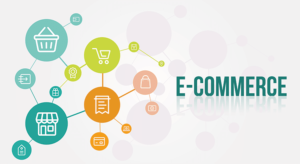The Rise of E-Commerce in Cameroon
E-commerce in Cameroon has experienced significant growth over the past decade, evolving from a niche market into a crucial component of the country’s economy. This rise has been fueled by advancements in technology, increased internet penetration, and a growing middle class with a demand for convenient shopping solutions.
Early Beginnings
The e-commerce journey in Cameroon began slowly, with only a few platforms attempting to cater to the local market in the early 2010s. At the time, challenges such as limited internet access, low digital literacy, and a general lack of trust in online transactions hampered the growth of the sector. Many consumers were hesitant to shop online due to concerns about product quality and the reliability of delivery services.
Technological Advancements and Increased Internet Access
The turning point for e-commerce in Cameroon came with the rollout of 3G and 4G networks, which significantly improved internet access across the country. This technological leap made it easier for more people to access online platforms and conduct transactions. Moreover, the widespread adoption of smartphones enabled a larger portion of the population to engage with e-commerce platforms, leading to increased demand for online shopping options.
Key Players and Market Expansion
Several local and international e-commerce platforms have been instrumental in driving the growth of the sector in Cameroon. Jumia, one of Africa’s largest e-commerce companies, has been a pioneer in the market, offering a wide range of products from electronics to fashion. Other platforms like Glotelho and Afrimarket have also made significant inroads, catering to the needs of different consumer segments. These platforms have invested heavily in building trust with consumers by improving logistics, offering secure payment options, and providing customer service that aligns with local expectations.
The Impact of the COVID-19 Pandemic
The COVID-19 pandemic accelerated the growth of e-commerce in Cameroon, as lockdowns and social distancing measures forced consumers to rely more on online shopping. Many businesses that had previously operated solely in physical spaces quickly pivoted to e-commerce to continue serving their customers. This shift not only introduced more consumers to the benefits of online shopping but also prompted a wave of innovation in the sector, with businesses adopting digital marketing strategies and expanding their delivery networks.
Challenges and Opportunities
Despite its growth, e-commerce in Cameroon still faces several challenges. These include logistical issues related to last-mile delivery in remote areas, payment security concerns, and the high cost of internet data. However, these challenges also present opportunities for innovation. For example, the rise of mobile money services like MTN Mobile Money and Orange Money has provided a secure and convenient payment option that is widely used in the country.

Future Outlook
The future of e-commerce in Cameroon looks promising, with continued growth expected as internet access improves and more consumers become comfortable with online transactions. The government’s push towards a digital economy, coupled with increasing competition among e-commerce platforms, is likely to lead to better services and more affordable products for consumers. Additionally, the ongoing investment in infrastructure, such as improved road networks and logistics services, will further enhance the efficiency of e-commerce operations in the country.
The rise of e-commerce in Cameroon is a testament to the country’s adaptability and the opportunities that digital transformation presents. As the sector continues to evolve, it is set to play an increasingly important role in the economy, offering consumers greater convenience and businesses new avenues for growth.




